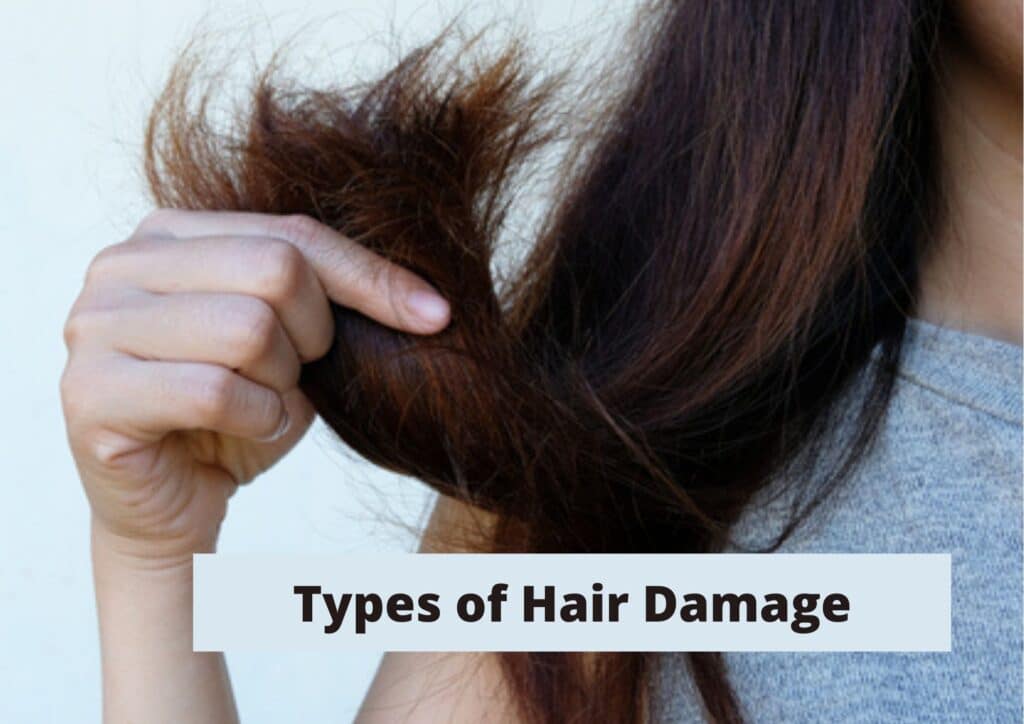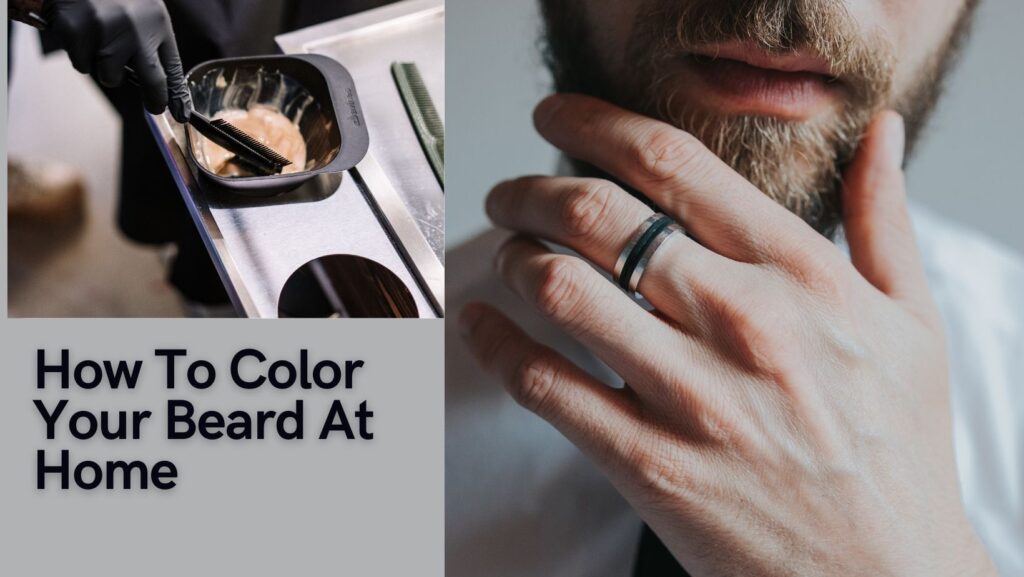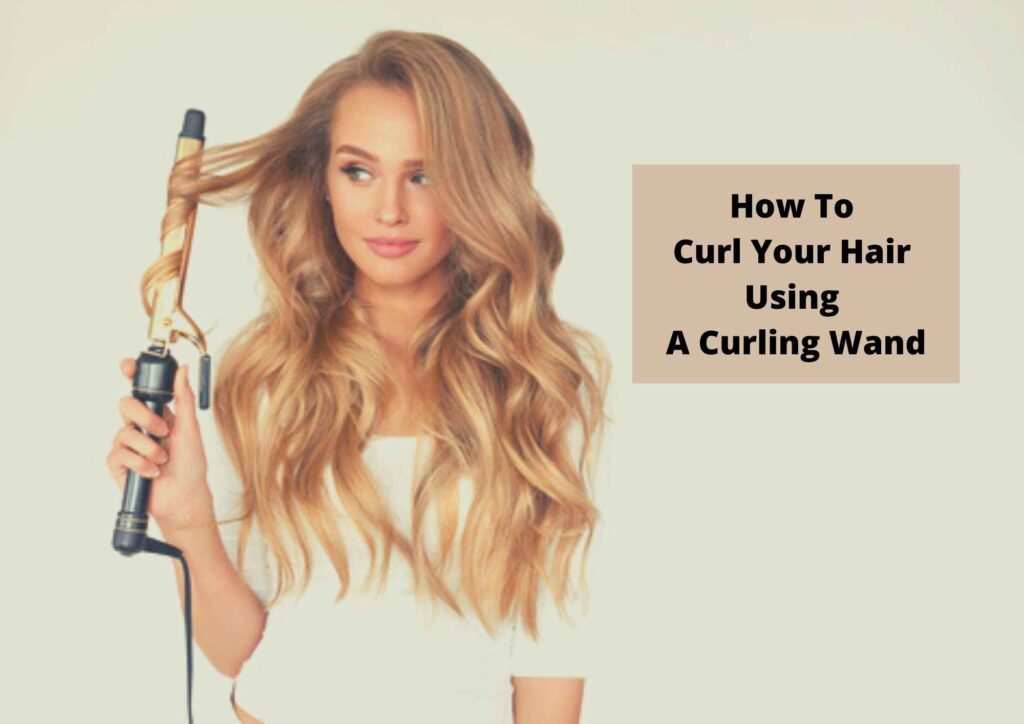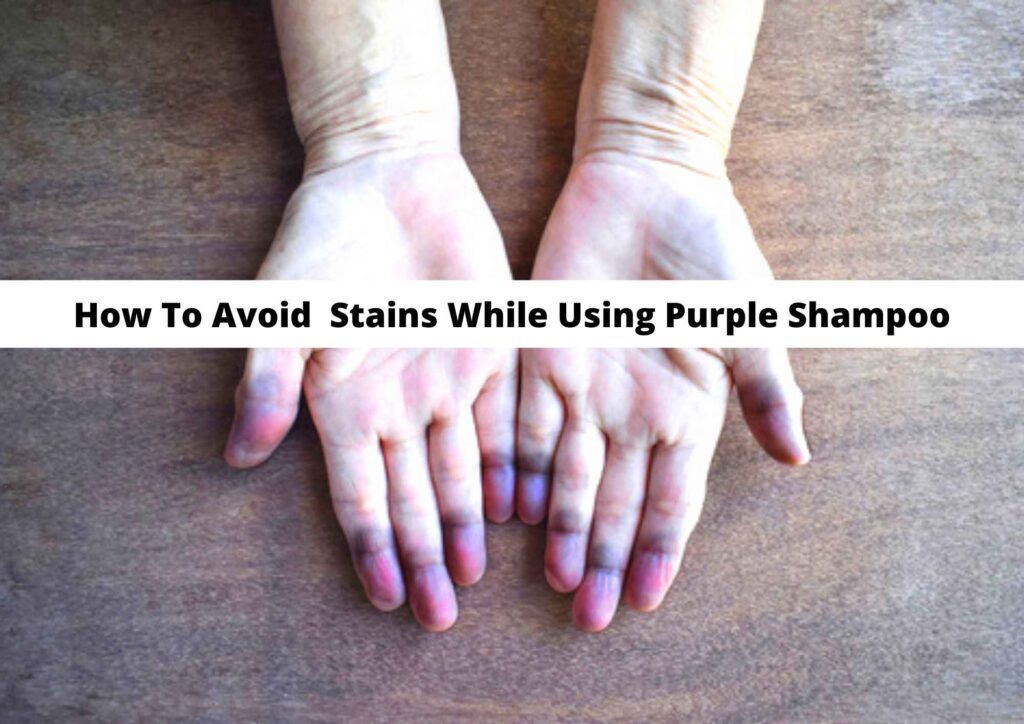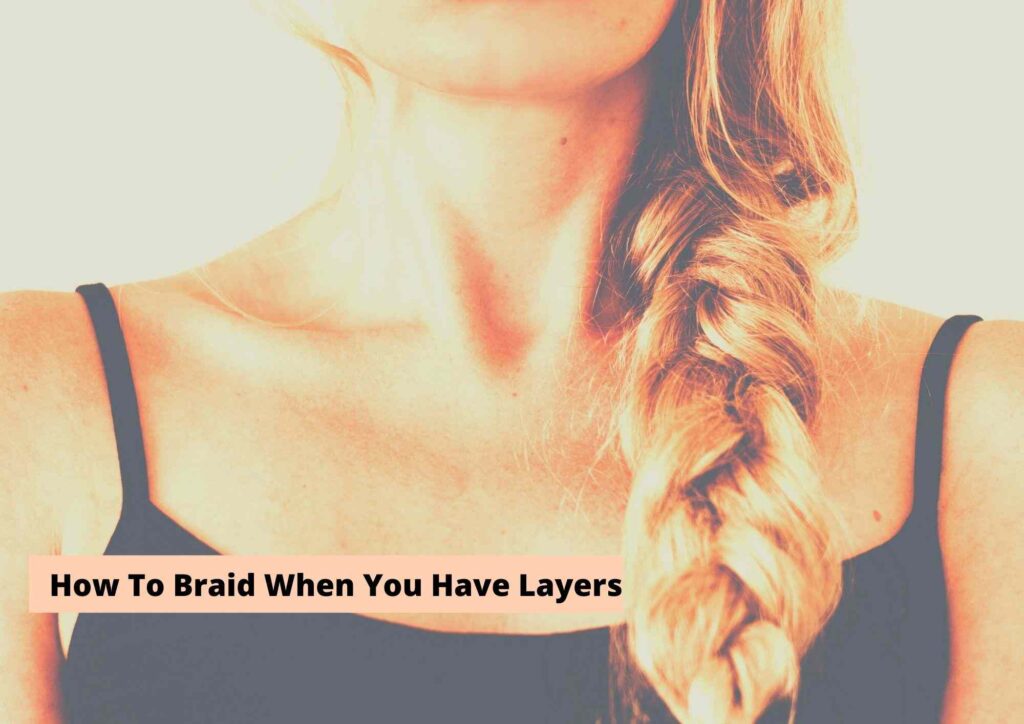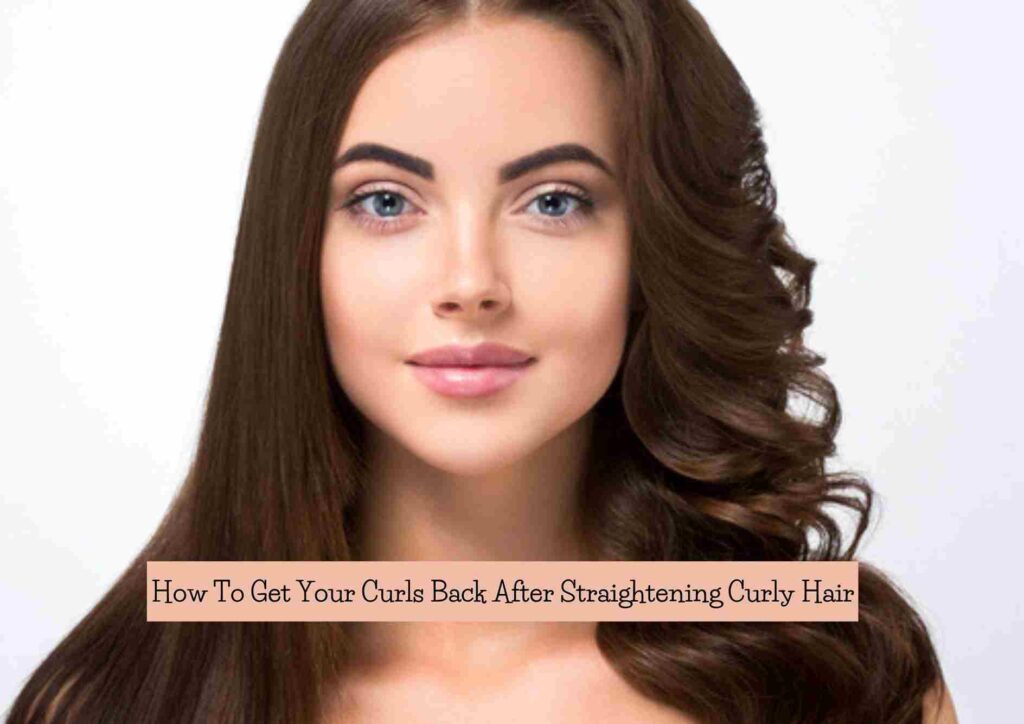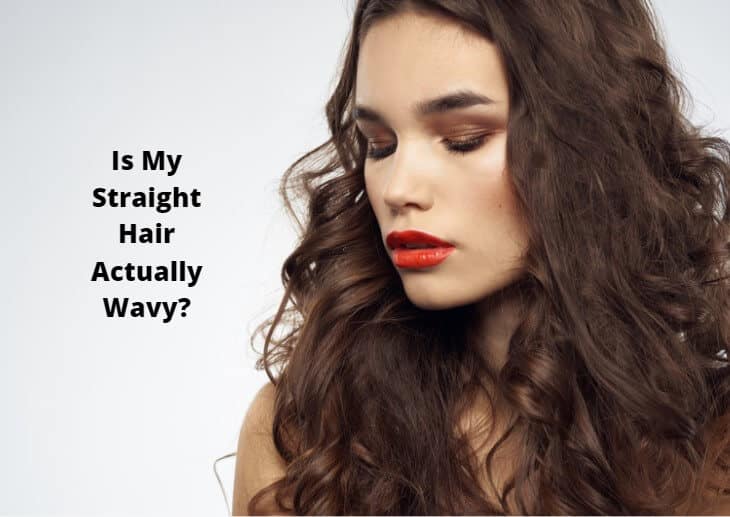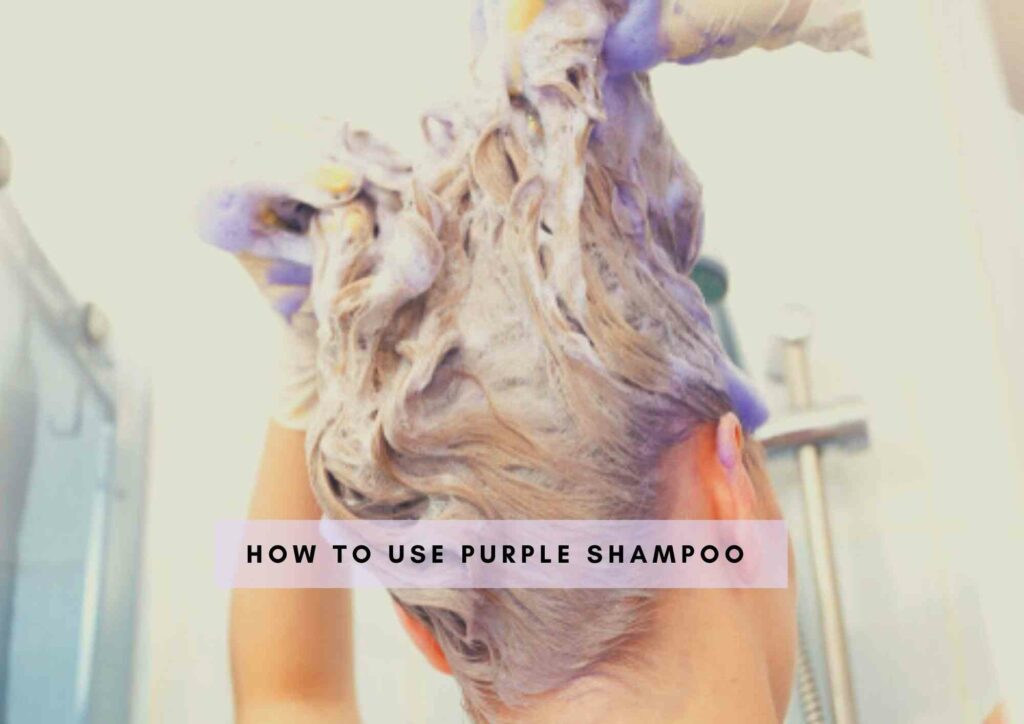Everyone wants beautiful hair, but sometimes we end up with a damaged, dull mess.
There are several types of hair damage. They can occur due to reasons such as heat styling tools, harsh chemicals, rough handling of hair, etc.
Related: What Causes Hair Damage
Related: Best Keratin Shampoo and Conditioner For Damaged Hair
Related: Best Protein Hair Masks For Damaged Hair
I’ve classified the types of hair damage into six main categories to make it easy to identify what problem your hair is going through.
There are also ways you can combat these types of hair damage and make your hair look and feel healthier.
How to identify damaged hair?
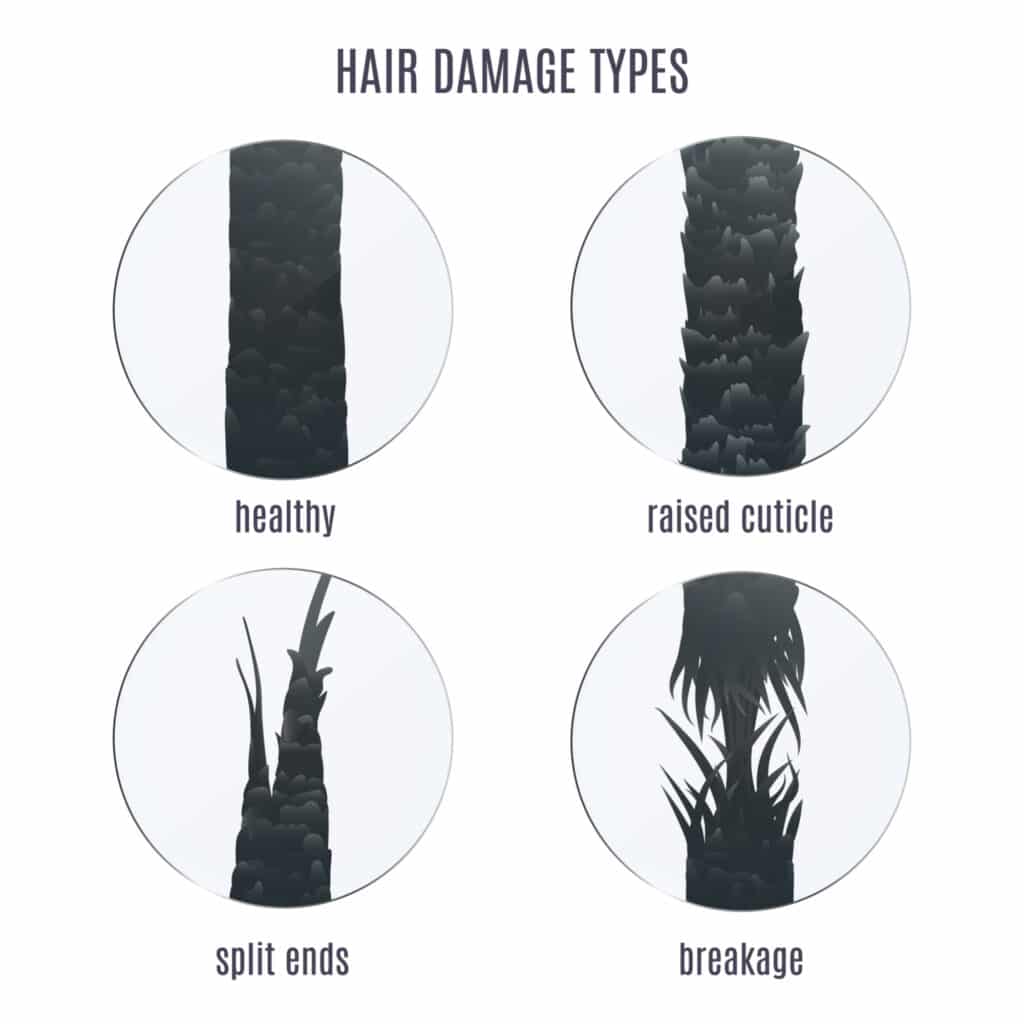
But before we get down to the types of hair damage, it’s essential to know what exactly constitutes damaged hair?
How to tell if your hair is in trouble and needs some extra loving? All you have to do is take a good look at your tresses. Damaged hair usually appear
Dull and Rough
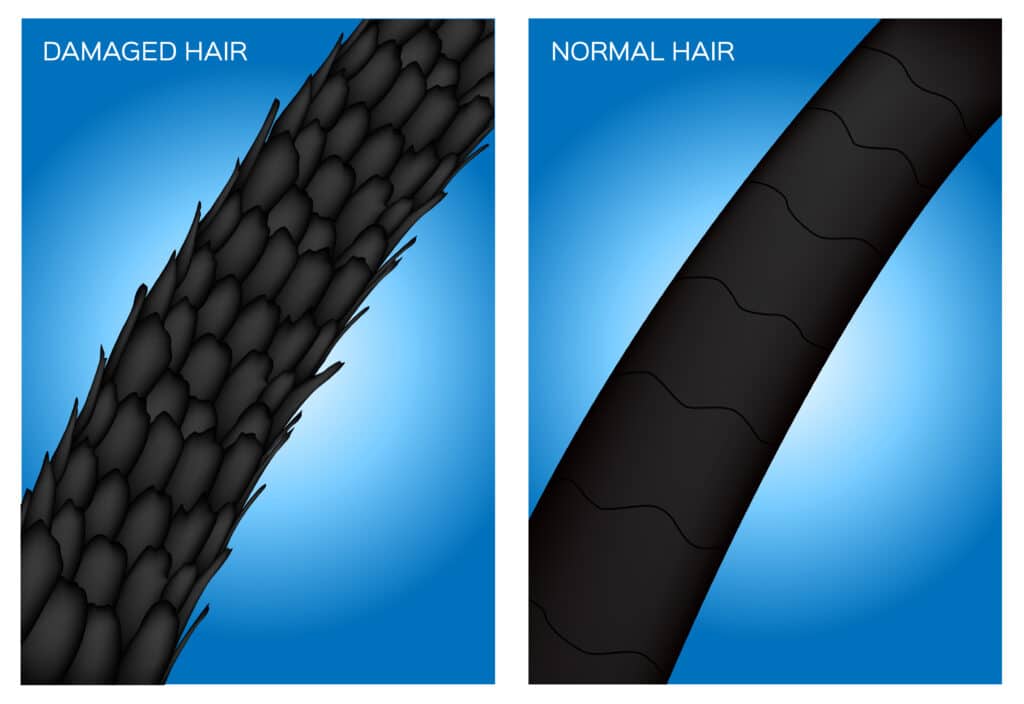
One of the most visible signs of hair damage is the lifting of the hair cuticles. Every strand of your hair is made up of tiny cuticles that lay over each other like scales
Usually these cuticles lay flat and are held together by a lipid layer, giving healthy hair a smooth, soft appearance.
In this state, hair is naturally resistant to water and has a low-porosity (doesn’t absorb water well).
It also reflects light, giving hair a natural sheen.
But in case of damaged hair, they lift up making your locks rough, frizzy, and dull looking.
Fragile and Unruly
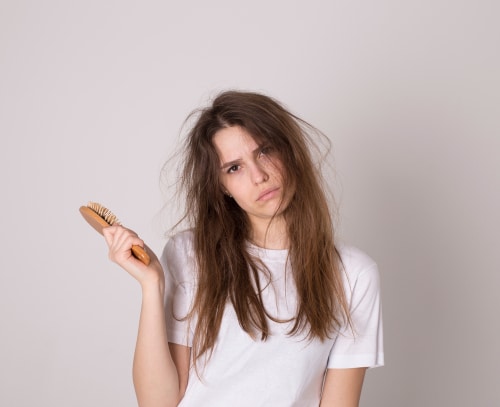
Constant hair coloring, relaxing, perming, straightening, etc. can not only lift up hair cuticles, it can further damage the inner part of your strands called the cortex.
The cortex is made up of keratin protein and structural lipids. The cells of the cortex and the way they are arranged determines the texture of your hair (wavy, straight, curly, Afro).
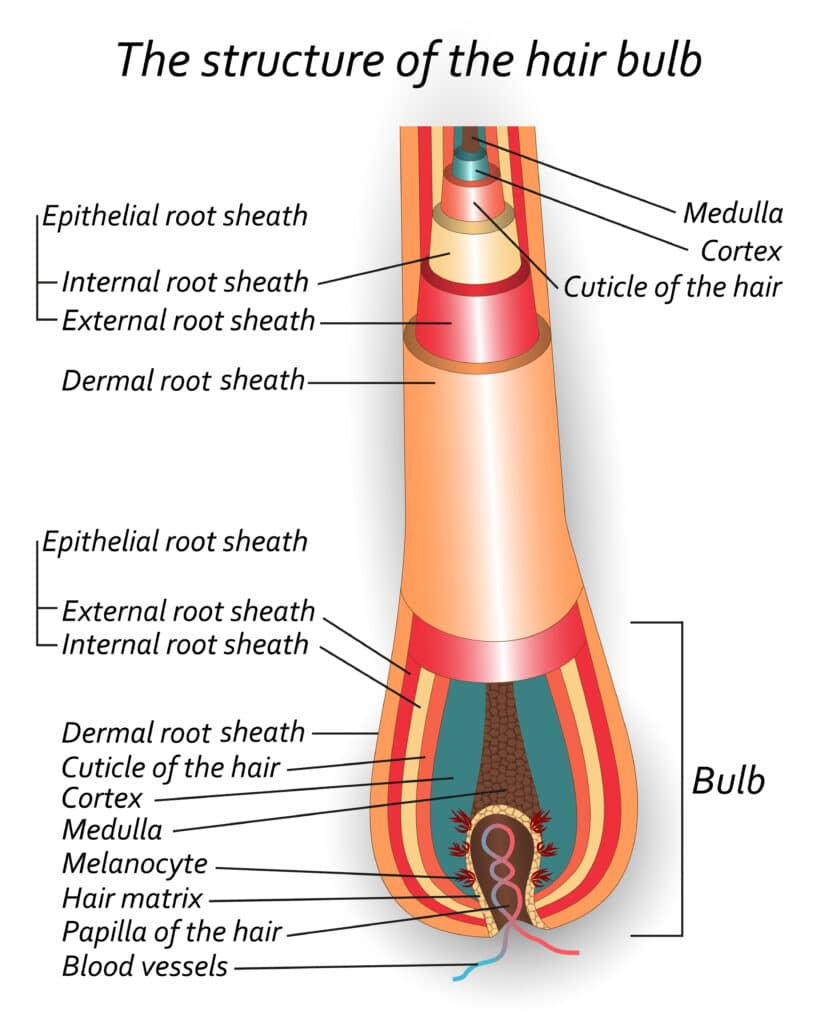
If the cortex is damaged, your hair might appear unruly on the outside and become more prone to breakage as well.
The cortex cells are usually highly stretchable and are responsible for hair’s elasticity and tensile strength.
But a damaged cortex can make hair prone to breaking off very quickly and also increase aging.
Thinning Hair
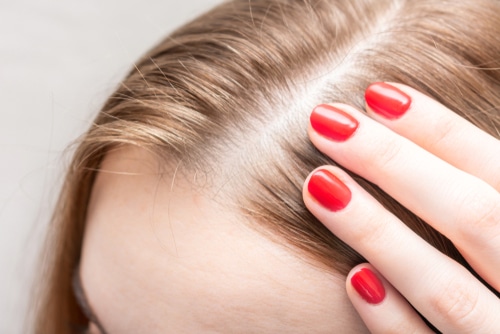
Harsh chemicals, heat, etc. that are directly applied to tresses are not the only cause of damage.
You need to look at your scalp as well.
If you constantly use products like gels, leave-in conditioners, etc. it can cause product build-up and clog hair follicles on the scalp.
Chemical treatment, ammonia-based dyes, forceful brushing, vigorously shampooing scalp are some other reasons the hair follicle can get damaged.
This leads to stunted hair growth, thinning of hair (as it doesn’t receive proper nutrition), and eventual hair loss.
Types Of Hair Damage
Split Ends
Split ends are among the most common types of hair damage. They occur when your hair strand splits into two at the very end.
Hair can split in the following ways:
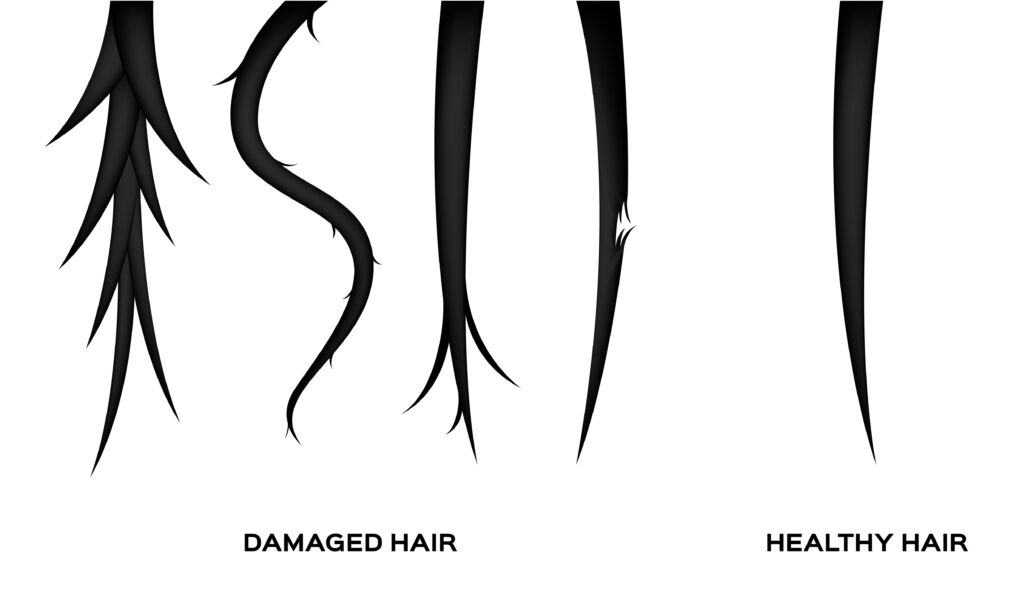
- It can split basically into two separate strands at the very end
- Hair can split into several different branches like that of a tree
- The outer layer (cuticle) might be lost while only the inner remains
Split ends are different from other types of hair damage in the sense that they are more damaging.
If you leave them untreated they can split the entire hair shaft.
The open cuticles can also make your hair look frizzy and damaged. Split ends also make your hair more prone to breakage and tangling.
How to fix split ends?

The best way to fix split ends is to trim them off. But if you want to prevent them from occurring in the first place, just remember to take these precautions with your hair.
- Use a satin or silk pillowcase while sleeping
- Don’t towel dry your hair
- Don’t comb wet hair
- Be gentle while styling your hair, especially in tight hairstyles
- Limit the use of heat styling tools
- Don’t use harsh chemicals (ammonia dyes, relaxers, etc.)
Heat Damage
The thing about hairstyles is that most people aren’t happy with the hair texture they have.
Curly haired girls love using hair straighteners while straight haired folks use curling irons to get bouncy curls.
While this experimentation is very fashionable, it can leave your hair damaged.
The heat from tools like hair straighteners, curling irons, hair dryers, etc. can dry out your hair and make it appear frayed and frizzy.
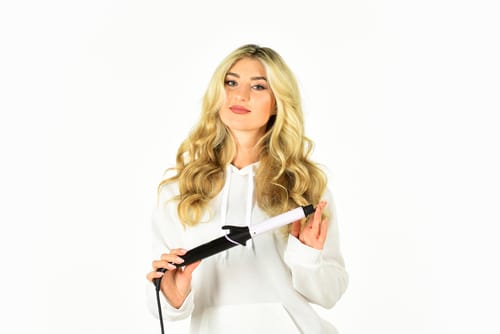
Hair experts agree that the optimum temperature for hair styling is 300-390 degree Fahrenheit if you have thick hair and only 290 degrees if you’ve got fine, thin hair.
Anything above that is sure to leave some form of damage or the other.
Related: How To Prevent Heat Damage
How to fix heat damage?
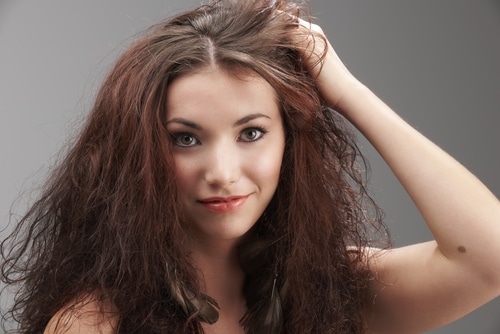
- Excess heat breaks down the keratin protein molecules in your strands, rearranging them. So a protein hair mask, applied once a week can work wonders in making heat damaged hair, healthy again.
- Always use a heat protectant serum or spray before using hot styling tools, these help reduce damage by forming a shield around the hair strands.
- Keep the temperature on your straighteners and curling irons on a low setting
- As much as possible, use the cool air setting on your hair dryer
- Use foam hair rollers or hair plopping as an alternative to curling irons
Chemical Damage (Overprocessing)
Trying out new looks and hair colors is all the rage these days. And it’s super fun too! But your hair sometimes bears the consequences of all the chemical treatments and ends up damaged.
Chemical damage occurs when we use harsh ingredients on your tresses. These chemicals include bleach, ammonia, sulfates, peroxide, formaldehyde, and more.
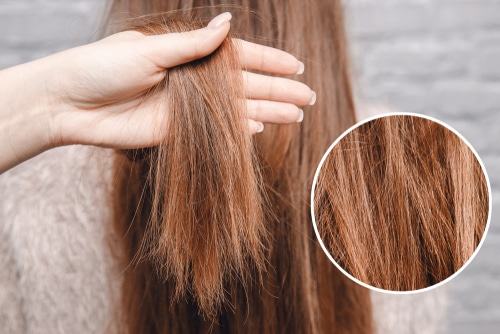
Bleach and peroxide are commonly used in hair dyes. These help remove the darker pigments from your hair so that it can take up lighter hair colors.
Sodium Laureth Sulfate (SLS) and Sodium Lauryl Sulfate (SLES) are very, very common ingredients in shampoos. You might be using a sulfate shampoo without even knowing it.
And while these are great for removing dirt and debris, using them in an everyday shampoo can leave your hair dry and unruly.
A lot of semi-permanent hair treatments such as keratin straightening treatments or perming uses formaldehyde and other chemical relaxers that hurt hair health.
How to fix chemically damaged hair?
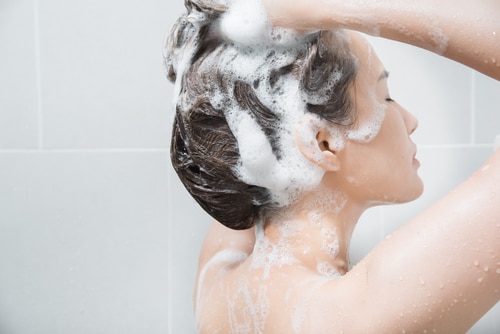
- Using sulfate-free shampoos to wash your hair daily
- Pick shampoos and conditioners with ingredients like keratin protein that help repair damage
- Pampering your hair with a spa and use hair masks on a weekly basis
- Don’t chemically alter your hair and go for wigs or hair extensions instead
- Always choose an ammonia-free hair dye
- Go for colored extensions instead of bleaching dark hair
- Use color-depositing shampoos and conditioners like oVertone instead of coloring your hair with harsher dyes every few months.
Sun Damage
One of the types of hair damage most people don’t know (or care much about) is sun damage.
Just like your skin, your hair can also face the brunt of UVA and UVB radiation from the sun.
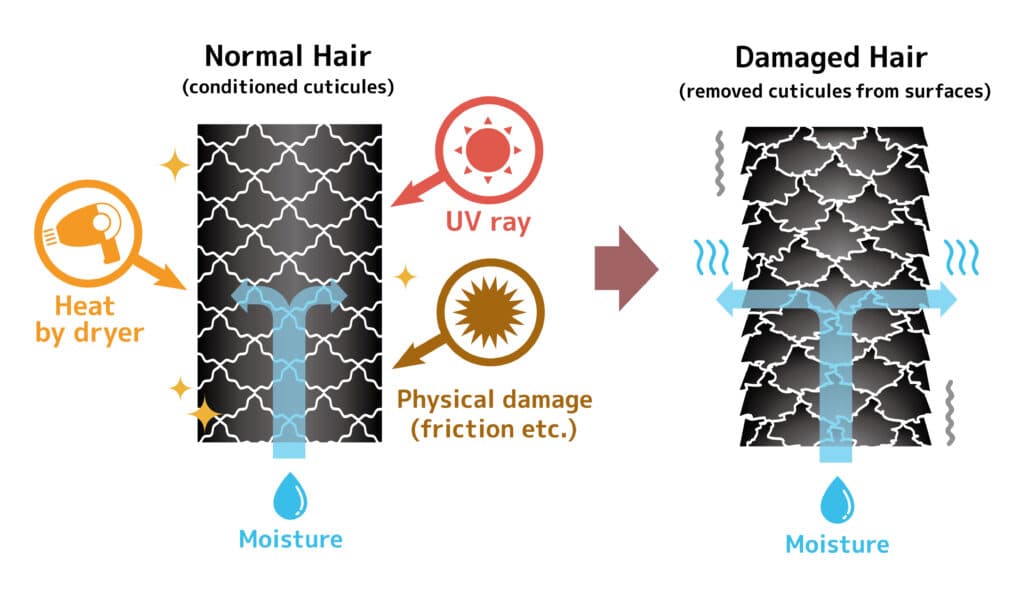
So it’s important to protect your hair, just like you protect your face with a sunscreen.
UV or sun damage is more apparent on color-treated hair. Constant sun exposure can fade hair color easily.
It can also leave your mane dry, dull, and more prone to breakage. If you find your tresses looking thin and brittle, sun damage might be a hidden reason.
How to control sun damage on hair?
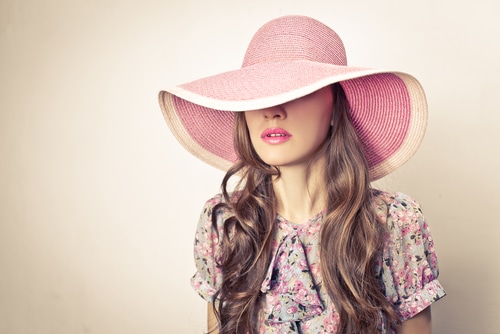
- The easiest way to prevent sun damage is to shield hair from UV rays when you’re out. No, you don’t have to wear a hat or a scarf ALL the time. But on particularly sunny days or noon times, it’s best to put on a hat or a cap.
- Using an umbrella is another way to protect your hair. This can also keep your skin safe.
- If you have color treated hair look for shampoos with UV filters that prevent discoloration.
- Don’t use heat styling tools the day you’re spending outside in the sun.
- Carry a hair mist to hydrate your tresses often.
Mechanical Damage
Mechanical damage is one of the types of hair damage, I’m very guilty of bringing upon my locks.
It happens when you’re too rough in handling your hair. Any sort of pulling, tugging, tearing, etc. comes under mechanical damage.
Too much friction and tension caused by combs, tight hairstyles, hair clips, scrunchies, vigorous towel drying, and other reasons are the most common causes of mechanical hair damage.
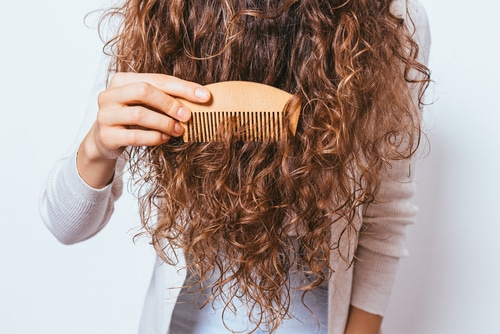
A lesser known cause of mechanical hair damage are cotton pillowcases. The fibers on these pillowcases are long and tug at your strands.
Cotton, being highly absorbent is also known to absorb moisture from your tresses, worsening the friction.
Combing through wet hair is another reason your hair becomes damaged. Also, wet strands are weaker and towelling hair dry can cause the cuticles to open up. It can also lead to split ends.
How to fix mechanical damage on hair?

- Use a worn out t-shirt to dry your hair rather than a towel
- As much as possible air dry hair or use a diffuser
- Do not comb or style wet hair
- Avoid tight hairstyles like ponytails, buns, tight braids, etc.
- Be careful not to use elastic hair bands or scrunchies that get tangled in your hair
- Be gentle while brushing your hair and avoid using products with bristles of plastic or other synthetic materials
- Use a hair oil or serum to make detangling hair easier
Hard Water Damage
Moved into a new house? Do you find your hair looking rougher and drier? The culprit could be hard water!
A lot of people don’t even know that the water they use to wash their hair can have severe effects on their precious tresses.

It’s a well known fact that hot water can open up hair cuticles and damage hair. But what about the waters pH?
Some cities and areas predominantly use hard water. This water contains a lot of minerals like calcium, magnesium, silica, among others.
These minerals dry out hair, damage hair follicles, and lead to hair thinning and breakage.
You can easily find out if the water you’re using is hard water by checking how well soap lathers. Usually, it’s impossible to get a good amount of lather with hard water.
How to fix hard water damage on hair?
- The easiest way to fix hard water damage is to invest in a water softener. This device converts hard water to soft water by removing all the minerals in it. It’s not just useful for your hair but also comes handy while you’re doing the laundry or dishes.
- Another way to fix hard water damage is to use an apple cider vinegar rinse on your tresses. It helps balance out your hair’s pH levels and removes mineral residue and product build-up.
- Use a good chelating shampoo or clarifying shampoo once a week to get rid of the mineral residue from hard water.
- Hard water often leaves hair dry, so using a leave-in conditioner after your shampoo can help bring back shine and softness.
What Does Damaged Hair Look Like

The easiest way to identify damaged hair is to take a close look at it. Damaged hair often appears rough, coarse and dry. This is because the cuticles of damaged hair are open allowing moisture to escape out and the structure of the hair strand to feel rough due to the upturned cuticles.
Damaged hair also is prone to frizz because of this same reason. The open cuticles and lack of moisture makes hair curl and not in a good way. So damaged hair often appears “poofy”.
There is also a distinct lack of shine in damaged hair. Your hair appears shiny when the cuticles lie flat giving a smooth surface for light to bounce off of. Unfortunately, this isn’t the case when you have damaged hair. So your hair looks dull and lifeless.
If you’re suffering from hair damage, then there will also be more obvious signs such as split ends. This is a result of mechanical damage usually due to factors like rough hair brushing, combing hair when wet, rough towel drying, tight hairstyles, etc.
Those were some of the types of hair damage and easy tips on how to keep them under control.
This doesn’t mean you shouldn’t style, color, or use straighten your hair ever again.
It just means that your tresses deserve some love and attention especially if you’re putting them through a lot of strain.
I hoped this article helped you figure out what was wrong with your tresses and find a way to repair that damage.
Also Read:
To Summarize

